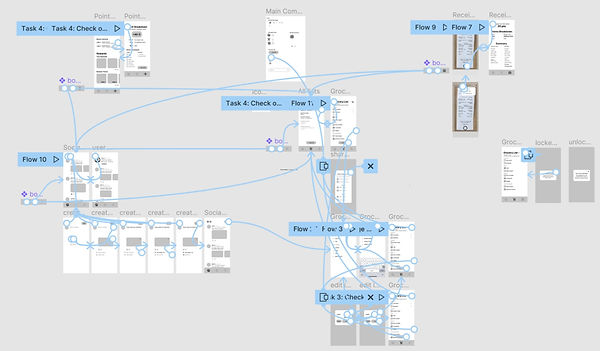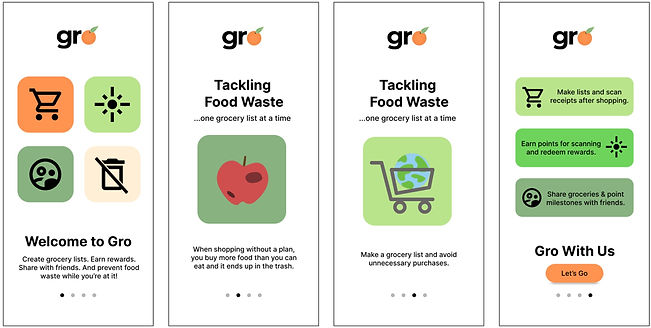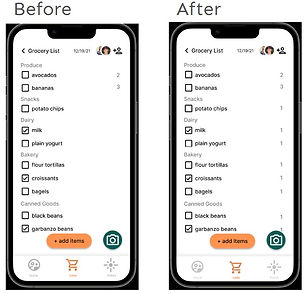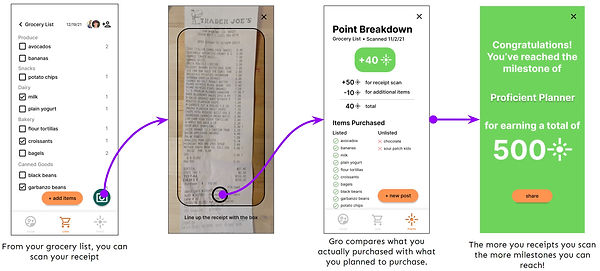
Project Type /
Explored cognitive principles of thinking through making. Experience design, rapid prototyping, sketching, bodystorming, cardboard modeling, UI hacking, and design theory
Date /
2021
Role /
Product Designer, UX Researcher
Focus /
Sustainability, food waste, environmentalism
Teammates /
Lisa Zhou, Genevieve Cassidy
Harvard School of Public Health defines food waste as food fit for consumption but lost at retailer or consumer
About the Project
Initial Research
The Problem
How do we solve the problem?
Design Process
Building the Mobile Information System
Reflection
Overview and Background
Working in the thematic area of Environment and Development, my team and I chose to tackle food waste. A significant yet preventable problem that affects the population and the environment.
We wanted to focus on reducing food waste at the consumer level because this is where 31% of the food loss occurs. Also, 95% of all discarded food waste ends up in landfills where it rots and emits methane, a powerful greenhouse gas. With food being the single largest category of material in municipal landfills in the US, reducing food waste can contribute greatly to preventing climate change.
We are all very passionate about helping the environment and we wanted to design something that would disrupt the cycle of food waste and change the system for the better.
Deepen our Understanding of Food Waste
To better understand the topic of food waste, we conducted secondary research and joined various communities online. We wanted to find out what points of the shopping process are causing food waste. We then sent out a questionnaire and conducted interviews to get data on environmental attitudes, buying habits, and food disposal.

Research Insights
The questionnaire revealed that shopping without a list or grocery planning causes overbuying and impulse purchases which leads to buying more than one needs and it inevitably ending up in the trash and landfills. The interviews we conducted also further showed that people are less willing to change their behavior if it’s inconvenient and unaffordable.
Personas
We then wanted to clarify “who are we designing for?” so we drafted up a primary and secondary persona to represent the different user types that may use our product. The personas helped us understand the users’ goals, behaviors, challenges, and needs.

Problem Statement
“How can we address food waste with an app that holds users accountable for what they purchase with the added feature of social connection?”
We realized that the problem of food waste can be mitigated from the very beginning of the shopping process: the planning stage. The problem we wanted to address was how we can equip our users with the tools that allow them to grocery plan whilst making it convenient and more affordable.
The Solution
We will address food waste by creating an app, Gro, that will act as a smart grocery list that incentivizes and encourages users to grocery plan and stick to it.
Gro will compare what you purchased with what you planned to purchase. It will reward you for sticking to your grocery plan with deals and coupons. The social feature is another way to hold users accountable by allowing them to post about their grocery trips, follow each other, and see where and what they have purchased on their grocery runs.
Grocery planning will make the shopping experience time-efficient and convenient and the incentives for sticking to the grocery plan will make it more affordable. Resulting in more willing users buying just what they need and thus preventing food waste.
Competitive Analysis

We ran a competitive analysis to learn what works and what gaps in the market we could tap into. We compared our solution against the iOS Notes app, Mealime, Instacart, Fetch, and standard pen and paper. The comparison criteria was usability, user flow, design, social, and incentives. We were mostly inspired by Fetch, a rewards based app that just requires users to scan their receipts, and how they incentivize users. We also found that there was a gap in the grocery shopping market for socializing and incentives. We therefore focused on these two features to make Gro stand out from competitors.
Storyboarding
The next natural step is to visualize the scenarios and expectations of Gro, using the personas we created earlier on. Our storyboards highlighted scenarios like impulsive shopping, financial shortcomings, sharing and connecting with friends, and receiving incentives.

Sketches and Wireframing
My favorite part ^_^ It was time to sketch out and wireframe Gro. This is where I really utilized my strength in product thinking.
We designed around three key features of the app:


Low-Fidelity Prototyping and User Testing
After we were satisfied with the rough sketches and wireframes, we transferred the design onto Figma for a low-fidelity prototype.

We conducted user testing and made improvements. It was mostly stylistic changes and moving pages around to make the user flow more streamlined. Overall, users found the core features of the app useful and found the concept quite unique.
Style Guide and Moodboard
Before committing to a high-fidelity prototype, we needed to clarify what we wanted our app to look and feel like. We agreed on a modern and energetic look inspired by nature.


High-Fidelity Prototyping and User Testing
Using Figma, we designed a clickable high-fidelity prototype and it was quite exciting to see our app slowly coming into fruition.

During testing, the users found the main functions intuitive and 70% of them would use the app to grocery shop. The reward system and the social feed stood out the most.
There were also actionable insights like how users were unsure about the purpose of the app until we explained it to them so we made an improvement to include Onboarding screens that provided information on the app’s purpose and its relevance to preventing food waste.

The next actionable Insight was that users had trouble with the task of changing the quantity of items in a grocery list so we added quantities next to every item.

Final Product

Onboarding Screens

Grocery Lists

Social and Points

Conclusion
I am very proud of what we managed to achieve. The Gro app was well received and a concept that can be applied in the real world. We found a way to empower the consumer to make the right decisions to prevent food waste. Oftentimes we forget that being environmentally sustainable can also benefit us in the long run like saving us money and time. That is what we hoped Gro could do for our users. To be beneficial to the planet and those who inhabit it.
Key Achievements and Takeaways
There is no one solution that will stop food waste but I believe that my teammates and I came up with an innovative way to tackle this issue. I learnt how to conduct research and to design empathetically. Collaborating to design an app from scratch and doing it all online definitely challenged me but it taught me the value of communication and trust. Our passion for the environment and empowering the consumer was what drove us to make an idea into a reality.
There is a high possibility that I might reconnect with my teammates in the future and potentially fully develop this app to be available to the public. That is how passionate and confident I am about what we created and the value it could bring to this world.
